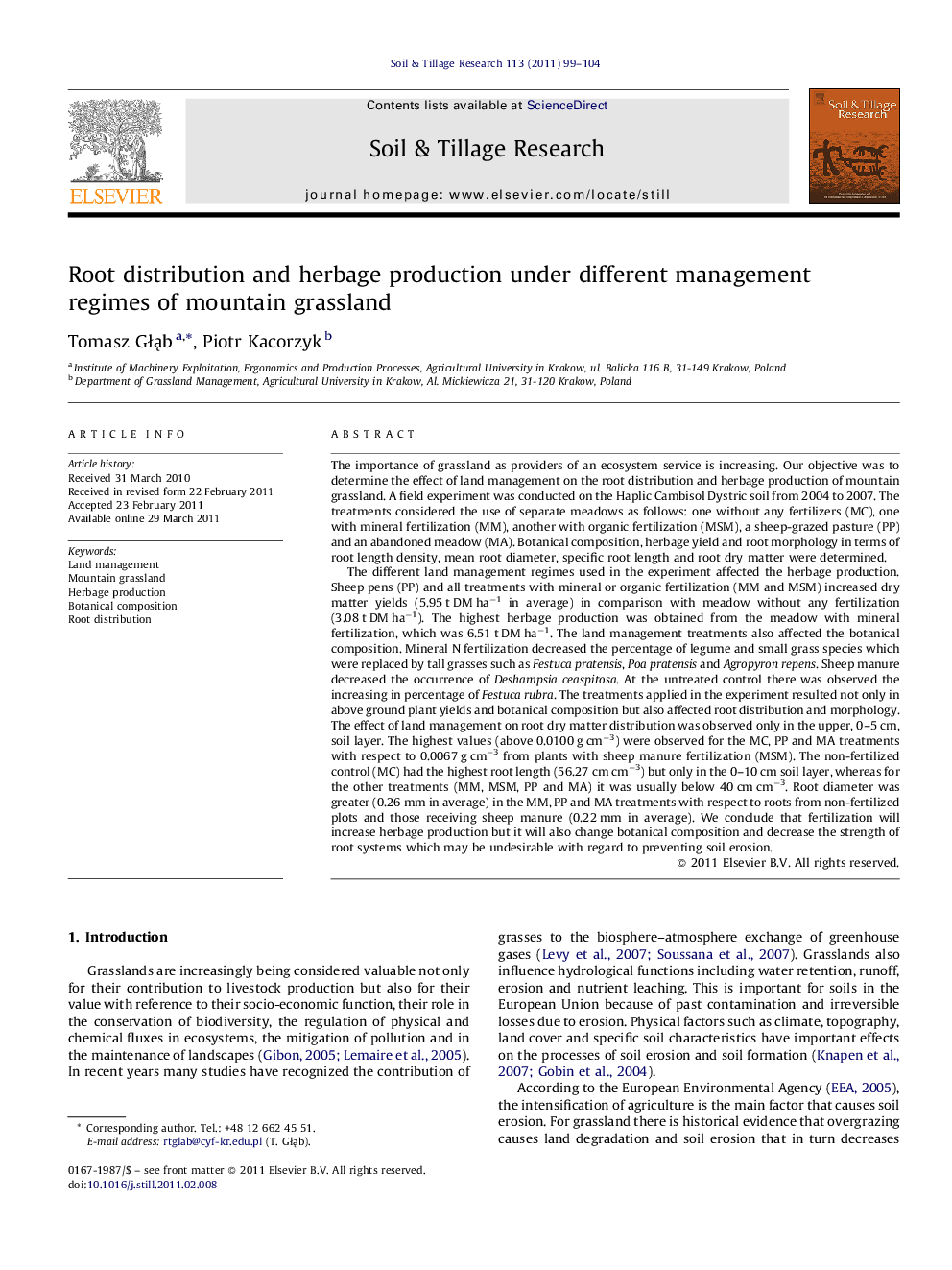| کد مقاله | کد نشریه | سال انتشار | مقاله انگلیسی | نسخه تمام متن |
|---|---|---|---|---|
| 306132 | 513075 | 2011 | 6 صفحه PDF | دانلود رایگان |

The importance of grassland as providers of an ecosystem service is increasing. Our objective was to determine the effect of land management on the root distribution and herbage production of mountain grassland. A field experiment was conducted on the Haplic Cambisol Dystric soil from 2004 to 2007. The treatments considered the use of separate meadows as follows: one without any fertilizers (MC), one with mineral fertilization (MM), another with organic fertilization (MSM), a sheep-grazed pasture (PP) and an abandoned meadow (MA). Botanical composition, herbage yield and root morphology in terms of root length density, mean root diameter, specific root length and root dry matter were determined.The different land management regimes used in the experiment affected the herbage production. Sheep pens (PP) and all treatments with mineral or organic fertilization (MM and MSM) increased dry matter yields (5.95 t DM ha−1 in average) in comparison with meadow without any fertilization (3.08 t DM ha−1). The highest herbage production was obtained from the meadow with mineral fertilization, which was 6.51 t DM ha−1. The land management treatments also affected the botanical composition. Mineral N fertilization decreased the percentage of legume and small grass species which were replaced by tall grasses such as Festuca pratensis, Poa pratensis and Agropyron repens. Sheep manure decreased the occurrence of Deshampsia ceaspitosa. At the untreated control there was observed the increasing in percentage of Festuca rubra. The treatments applied in the experiment resulted not only in above ground plant yields and botanical composition but also affected root distribution and morphology. The effect of land management on root dry matter distribution was observed only in the upper, 0–5 cm, soil layer. The highest values (above 0.0100 g cm−3) were observed for the MC, PP and MA treatments with respect to 0.0067 g cm−3 from plants with sheep manure fertilization (MSM). The non-fertilized control (MC) had the highest root length (56.27 cm cm−3) but only in the 0–10 cm soil layer, whereas for the other treatments (MM, MSM, PP and MA) it was usually below 40 cm cm−3. Root diameter was greater (0.26 mm in average) in the MM, PP and MA treatments with respect to roots from non-fertilized plots and those receiving sheep manure (0.22 mm in average). We conclude that fertilization will increase herbage production but it will also change botanical composition and decrease the strength of root systems which may be undesirable with regard to preventing soil erosion.
► The grassland management regimes affect the yields and botanical composition.
► Mineral N fertilization decreased the participation of legumes and small grasses.
► Fertilization affected root distribution and their morphometric parameters.
Journal: Soil and Tillage Research - Volume 113, Issue 2, June 2011, Pages 99–104